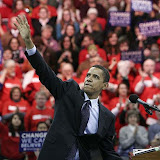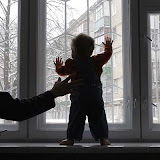Some photos from my new project Fracking Pennsylvania are in an exhibit opening this week in New York City.
In Dimock, PA, Craig and Julie Sautner are among 14 families whose drinking water wells became contaminated after gas drilling on their properties. Here the Sautners drive by a new drilling rig on a neighbor’s property.
FRACKING: Art and Activism Against the Drill
An art exhibition and public dialogue about the ravages of natural gas drilling
Dates: December 7, 2010 - February 5, 2011
Opening Reception: Tuesday, December 7, 7-9pm
Exit Art
475 10th Avenue, at 36th Street
New York, NY 10018
www.exitart.org/exhibition_programs/current_programs.html
Exit Art announces Fracking: Art and Activism Against the Drill. Hydraulic fracturing (“fracking”) is a new means of gas extraction that is now beginning in New York and Pennsylvania. This exhibition will expose this process of gas extraction that is contaminating water supplies and polluting the air worldwide. Artists were invited to submit documentary videos, photography, paintings, sculpture, mixed media, and works of literature. Through public lectures and calls to action, this exhibition will engage the public in dialogue on this issue, and encourage audiences to continue educating themselves and their communities on fracking and its detrimental effects.
Organized by Lauren Rosati, Assistant Curator, with Peggy Cyphers, Ruth Hardinger, and Alice Zinnes.
ABOUT FRACKING
Hydraulic fracturing (“fracking”) is a means of gas extraction that accesses gas trapped more than a mile below the earth’s surface. When a well is fracked, small earthquakes are produced by the pressurized injection of millions of gallons of fresh water combined with sand and chemicals, releasing the gas, as well as toxic chemicals, heavy metals and radioactive materials that contaminate air and water.
Read more about the exhibit here.
See more of my photos here.























































